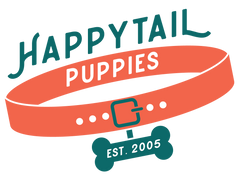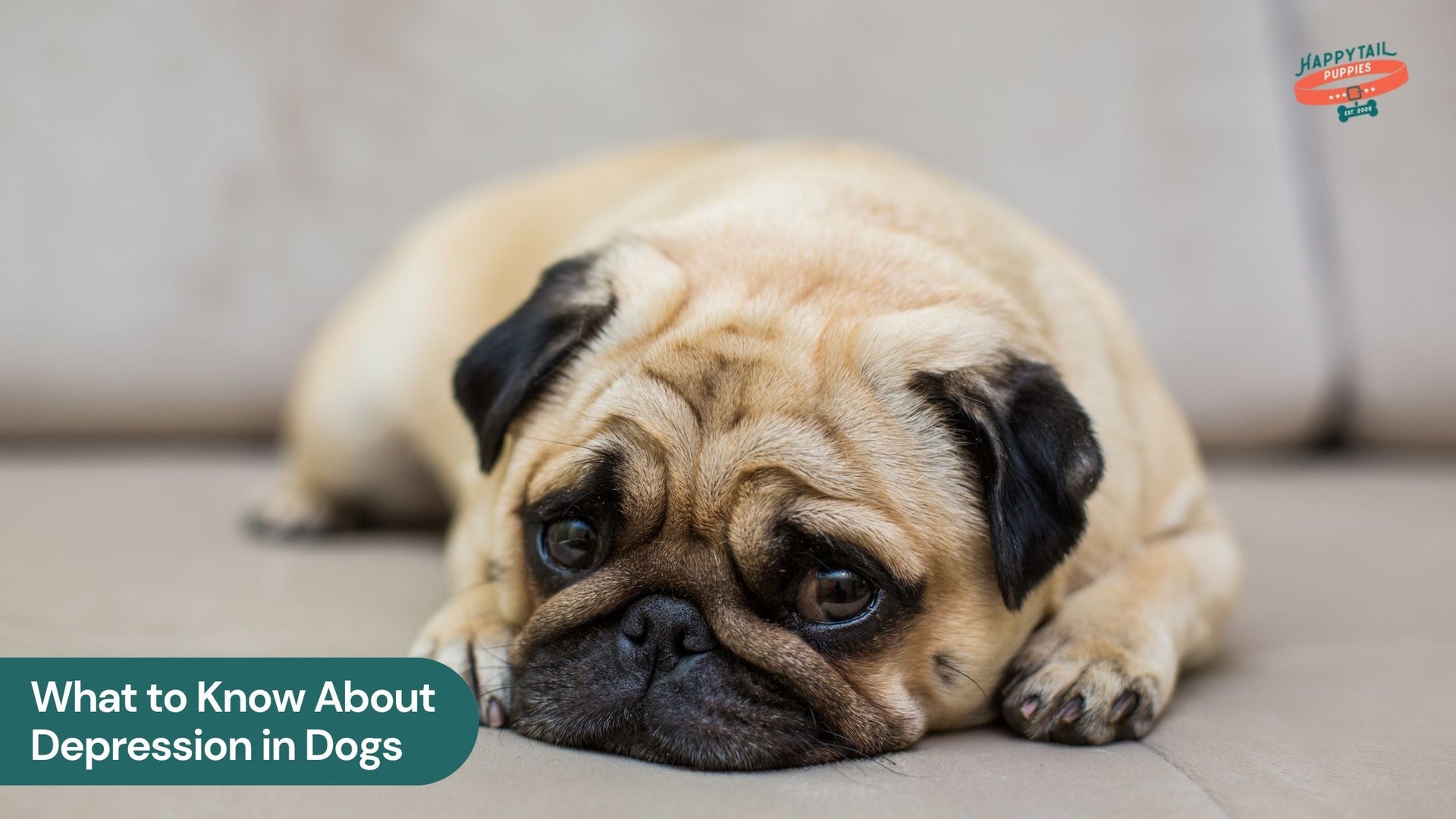What to Know About Depression in Dogs
Is your dog withdrawn or losing interest? It could be canine depression. Understand the signs and help your pup heal.
There might be times when you suddenly find your dog loses their interest in play, stops greeting you at the door, or spends hours lying in one spot. This is an extremely heartbreaking situation. Several pet parents feel helpless, unsure if they are missing out on something more serious or overreacting. The emotional toll of finding your once-happy companion withdrawn appears overwhelming. Knowing the main reason behind the change is the first step towards helping your pup heal. If your pup starts having the blues, then it may indicate depression. Dogs often get depressed just like people do. They start becoming withdrawn, stop eating, and lose interest in things they once enjoyed. Luckily, there are various ways you can help manage depression in dogs. Let us find out!
Can Dogs Get Depressed?
Absolutely, dogs can have depression, especially in small dog breeds like a Bichon Frise. We already know that someone who has experienced major depression that causes a loss of interest in favorite activities struggles to cope with daily life. It comes as no surprise that our pups experience a wide range of emotions like humans. But recent research shows that canine anxiety is far more widespread than what other pet owners might realise. A study found that 70% of dogs show signs of anxiety, highlighting just how common the issue is.
For instance, dogs are often depressed due to the underlying health issues or due to the sudden changes in their home, like the loss of a family member. Depression is a change in the dog's mood that leads to reduced interest in activities and overall sadness.
Although dog depression is not often considered a medical emergency, you should never ignore it. If your otherwise happy pup suddenly starts getting withdrawn or appears unlike himself, then it is important to visit the vet to recognize the cause.
Signs of Depression in Dogs
Dogs often communicate emotional distress through behavior. Knowing what to look for helps you take prompt action to support their mental well-being. We will now explore a few of the common warning signs.
Sudden Loss of Interest in Activities They Once Loved
A dog who earlier ran to the door for walks or barked with excitement at its favorite toy may suddenly lose interest. This apathy should never be confused with laziness, as it is a clear sign of emotional withdrawal. Dogs who experience depression sometimes ignore toys, resist commands, or lie around for most of the day.
Walks and playtime can effectively help regulate mood. Refusing to engage can be an early warning sign that your dog is not feeling right emotionally, especially in small dog breeds like Shih Tzu. Track how long this lack of interest continues, as extended times point to something that goes beyond a passing bad mood.
Changes in Appetite and Sleep Patterns
Changes in appetite, either eating too little or too much, are indicators of emotional disruption. You might often wonder, "Why is my dog not eating?" Dogs often skip their meals or choose food they once enjoyed. Others may start overeating if stress eating becomes a coping mechanism for your dog.
Sleep is also responsible for the shifts that occur during depressive episodes. Some dogs often sleep far more than usual, while others struggle to get comfortable and appear restless throughout the day. When your dog's eating and sleeping patterns have visibly changed for more than a couple of days, you should take it very seriously.
Increased Isolation and Withdrawal From Family
It’s common for owners to wonder if their dogs get sad when they start spending time away from them. Dogs that used to snuggle and follow you everywhere could now hide and pay little attention to you.
Avoidance is a classic sign of emotional distress. These pets might not care about what you call them, turn their head away when you look at them, and want to spend much of their time by themselves. Their behavior goes beyond moodiness and actually communicates that something has gone wrong.
Sudden Behavioral Problems or Regression
Canines struggling with emotions may start showing common behavior issues they learned to control in the past. House-trained pets might start having accidents indoors. Calm dogs may become reactive. When left alone, dogs sometimes chew items, bark loudly, or engage in destructive behavior.
These behaviors aren’t random; they’re coping mechanisms. If dogs feel their problems are too big, they will display behaviors that make it clear they need help. A dog who suddenly misbehaves may be trying to communicate that it needs help.
Physical Symptoms Without a Medical Explanation
Mood disorders can sometimes be noticed by physical things like shaking, tail-tucking, or changes in a pet’s weight. Dogs who are depressed may show signs that seem like physical health issues, and this often makes owners assume there is a medical problem.
An extensive review by a veterinarian can find any infections, thyroid conditions, or issues with organs. Persisting symptoms combined with all tests being normal usually point to depression. Emotional pain often manifests physically in animals.
Tips to Manage Depression in Dogs
When the signs are noticed, consider changing your dog’s daily habits to aid its recovery. Some dogs heal just by having a routine with love, but some need special care. The information below provides tips for support, feelings of positivity, and regaining trust.
Create a Consistent Daily Routine
Stability is crucial for dogs navigating emotional changes. A usual daily schedule helps dogs feel secure and less afraid because they can always depend on what happens. Make sure your dog eats at the same time each morning and evening and walks at the same time each day.
Research has shown that having a dog during difficult times leads to more support and fewer feelings of depression for their owners. The regular pattern of a pet’s day helps make them feel safer, which also helps promote emotional stability for their owners.
Offer New Stimuli and Mental Enrichment
Mental engagement provides an important distraction from emotional pain. Games, puzzles, activities that rely on the senses, and simple exercises may help your pet become smarter and gain confidence.
Rotate toys every few days to keep things interesting. Hiding treats throughout the house gets your dog to look for them and think about how to get them. Mental activities can prevent sadness, and they help dogs who seem uninterested in physical games.
Schedule More Physical Activity and Outdoor Time
Exercise is essential for physical and emotional health. Even if your dog acts bored and doesn’t want a walk, take it on a short one to help it relax. As time goes on, body movements aid in adjusting hormone levels and producing dopamine.
Changing the route of your walk will intrigue your dog by exposing it to different smells and situations. If swimming or throwing balls were your dog’s favorite activities, start letting them do them again slowly. Physical play promotes bonding and helps rebuild lost enthusiasm.
Encourage Social Interaction (When Appropriate)
Healthy contact with people and other animals is good for dogs. Spending time in a dog park or having a friend visit with their dog can support better feelings. A shy dog could be calmer if you keep the meetings short and hold them somewhere calm rather than visiting busier places.
Pay close attention to body language. Trust between people and dogs with emotional problems may take time to develop. Healthy social activities can break loneliness and bring happiness to remember.
Try Calming Tools and Soothing Environments
Certain dogs benefit from calming items such as aromatherapy for dogs, special clothes (thunder shirts), or soft music. They support your dog’s nerves and become very helpful when your dog is stressed or overexcited.
Cover an area in your house with a cozy bed, lights that don’t hurt your pet’s eyes, and your pet’s favorite toys. Make this space somewhere your dog can go when feeling overstimulated. Calm spaces help balance emotions and reduce sensory stress.
Consider Veterinary Intervention or Behavior Therapy
Not all cases of dog depression may improve by changing a pet’s lifestyle. If your dog’s problems do not get better, talk to your vet about different treatments. If symptoms are extreme, a doctor may prescribe medication to keep the mood stable and promote recovery.
Veterinary behaviorists are trained to treat animal mood disorders medically. Treatment plans involve changing behaviors, gradually exposing the patient to the fear, or scheduling structured activities involving the fear. They also assist by answering tough questions like "Why Is My Dog Afraid of Loud Noises" and staying close to owners to check how things are changing and improve the approach as necessary.
Use Food-Based Rewards to Reignite Motivation
Dogs experiencing emotional lows often need extra encouragement. Treats serve as encouragement for engaging in normal activities and make people feel happier. Show your dog that you appreciate any sign of interest they show.
Liver treats, freeze-dried meat, and peanut butter are good, high-value options. Both treats, kind words, and touch are needed to help the dog appreciate itself after responding positively to training.
Rebuild Confidence Through Simple Training Exercises
Teaching your dog something new or reminding him of an old task will result in good feelings for both of you. Training your dog for just a few minutes a day increases your feelings of achievement.
Dogs crave purpose, and small wins matter. Training methods secure your leadership and also give your dog guidance and mental focus. Make sessions short and fun so your pet does not get too stressed. Training can increase confidence, which in turn helps combat emotional heaviness.
Offer Daily One-on-One Bonding Time
Intentionally building a bond is different from just being present. At times, dedicate time to calmly pet, brush, and talk to your dog without things around you. Many dogs enjoy and respond well to being gently petted on the back and chest.
Studies conducted at Harvard found that having a strong relationship with a pet can reduce feelings of depression and anxiety. Notice their mood, get the message from their actions, and give them eye contact as a sign of comfort. This will help you grow closer and remind your dog you care for them, are there for them, and support them.
Reintroduce Favorite Activities at a Gentle Pace
Giving your dog low-stress chances to participate in their favorite things may help them regain interest. Slowly reintroduce old games or toys. Shift to your dog’s side, be excited, and let them approach when they feel like it.
When your dog gets interested, noticing its head up, ears focused, interested nose, or wagging tail, give some praise. Gradually building up nice activities helps your dog enjoy itself and feel less depressed.
Avoid Harsh Correction or Yelling During the Healing Phase
Activities like accidents in the house or not following commands are not due to the pet being defiant. Emotional pain in dogs can make them ignore usual training or commands. Harsh responses often make emotional symptoms worse.
Use calm redirection instead. Operate on prevention and encourage your dog to repeat the good behavior instead by offering a treat. Healing requires patience. Being quiet and calm allows your dog the chance to get over the shock.
Keep Track of Progress With a Daily Behavior Journal
Recording your dog’s behavior patterns can be incredibly helpful. Set up a simple log to keep recording your mood, whether you have an appetite, your energy levels, and any noticed behaviors. Give yourself a 1–5 score every day or take notes on what causes your symptoms to worsen.
Set up an appointment with your vet or behaviorist to make a treatment plan based on the record. Having a behavior journal makes it easier to see how animals are improving, which boosts owners’ morale during a slow recovery process.
Involve the Whole Household in Recovery
Family members need to understand your dog’s emotional needs. All family members, roommates, or partners should use the same schedule and cues and not do things that could interfere with recovery.
A unified home environment supports emotional healing. Give your pet consistent kindness, affection, and respect each day. Showing your dog you all care with a group effort can make them feel safe and respected.
Conclusion
It is often tempting to find rapid improvements. A few dogs often bounce back promptly; however, rest would take weeks or even months. Healing takes time and is not visible right away, especially when your pup has already undergone grief, trauma, or any serious changes. Celebrating small milestones, staying consistent, and staying hopeful are what the pet parents should follow. Over time, dogs will start recovering their spark, find new joys, and become emotionally connected to their families.


